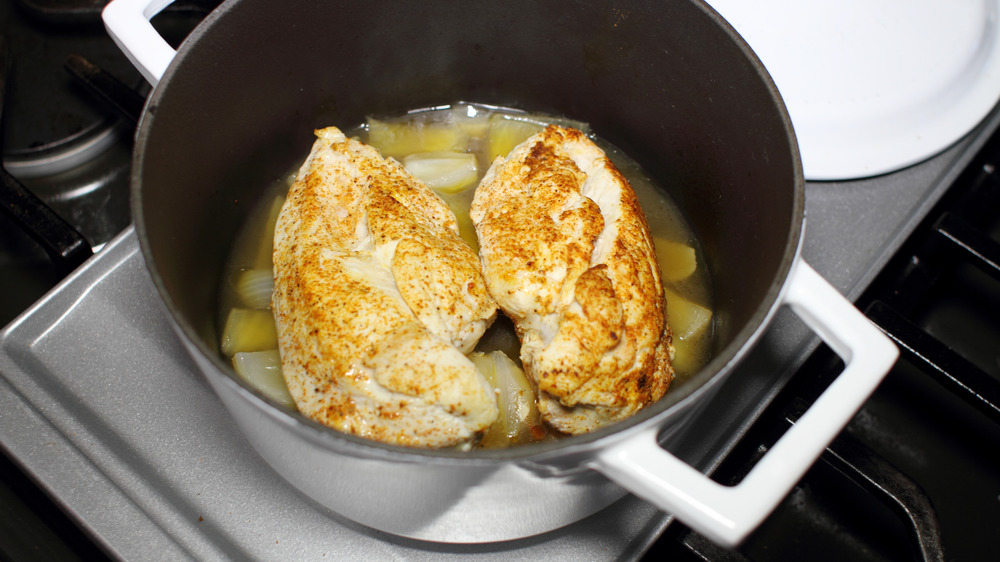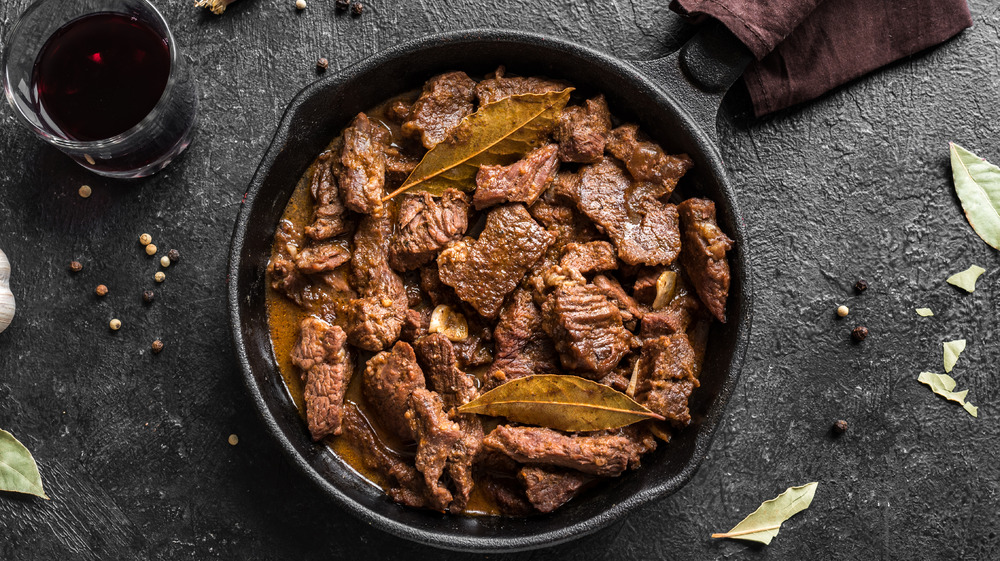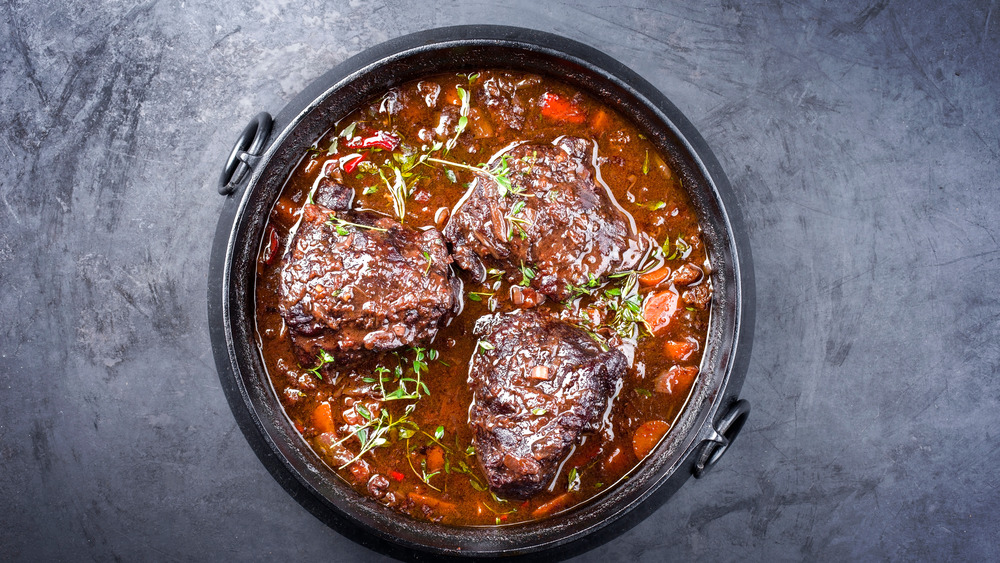Mistakes You've Been Making When Braising Meat
When you want to make a juicy cut of meat tender enough to fall right off the bone, nothing does the trick like braising. Braising, or cooking food in a small amount of liquid or stock, can turn any tough cut of meat into a gourmet delicacy; it's survived centuries as a cooking technique, despite advancements in kitchen technology (via Food of History). While this straightforward technique yields some incredible results, mastering it takes some practice. To that end, any kitchen newbie immediately faces some pitfalls when they start off on their personal braising adventure.
To help clear the air of any mysteries surrounding this age-old cooking process, Frank Proto, Director of Culinary Operations at the Institute of Culinary Education, has stepped in to share some of his secrets when it comes to pulling off this technique that can take any recipe to the next level.
The most common mistake arises when home cooks let their braised meat sit in the pot too long. "Many people overcook their meat when braising," Proto explained. "You want the meat to be fork tender, not falling apart. When you test the meat to see if it's done, it shouldn't just fall apart when you touch it with a fork." Once you figure out the proper cooking time, the real fun can begin.
Transforming the right cut of meat into an amazing meal
If you want to get started braising, the process couldn't be simpler, as noted by Proto. "First, season and brown your meat on both sides then remove it from the pot," he explained. "Next, add your mirepoix (which is typically carrots, onion, and celery) and brown them lightly. Add stock and deglaze the pan, scraping up any food on the bottom and bring to a simmer. Add the meat back into the pan along with any herbs, and cook low and slow in the oven until the meat is fork tender."
When you want to braise a piece of meat, finding the right kinds of cuts can make your life so much easier. "It's important to use the right cut of meat," Proto continued. "Meat with a good amount of fat, like chuck steak, will make your beef stew better."
While chuck steak can take your braising game to new heights, don't feel like you can't experiment with cuts a bit. According to Kitchn, anything from the shank, round, or brisket yields great results when you cook your meat with this method; these cuts come from parts of the animal that exercise the most, resulting in a tougher texture perfect for slow cooking.
Even if you perfect your braising technique, one simple mistake might throw off your whole recipe.
Never forget to season!
As with many other recipes, braising comes out best if you season while you cook. "I teach my students to always season throughout the cooking process," Proto revealed. "You want to add small amounts of seasoning as you go, not just a bunch of salt at the end. This way your end product has depth and isn't salty."
This piece of advice holds true, regardless of what you cook. According to Epicurious, seasoning meats, vegetables, pastas, and more as you cook gives you an accurate flavor profile that translates to a meal that tastes like a professional cooked it. So next time you wonder how your meal might turn out, give it a taste while it still sits in the pot and season as you go for the ultimate flavor experience.
With a fair amount of practice, anyone can master the fundamentals of braising, guaranteeing a great final meal. If at first you don't succeed, take some of Proto's advice to heart and don't give up — the perfect braised roast lies just within your grasp and after some practice, you'll braise like a pro.


